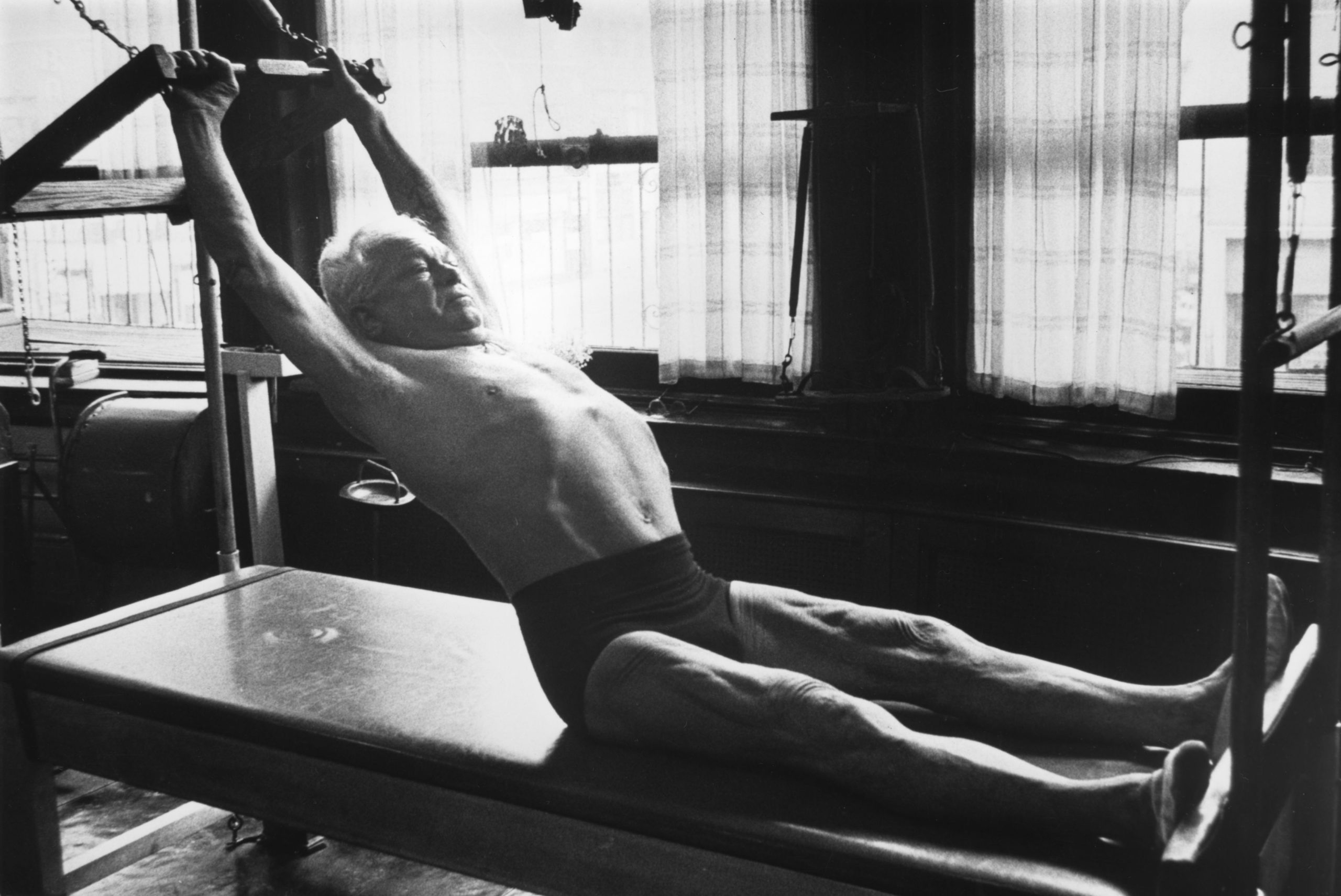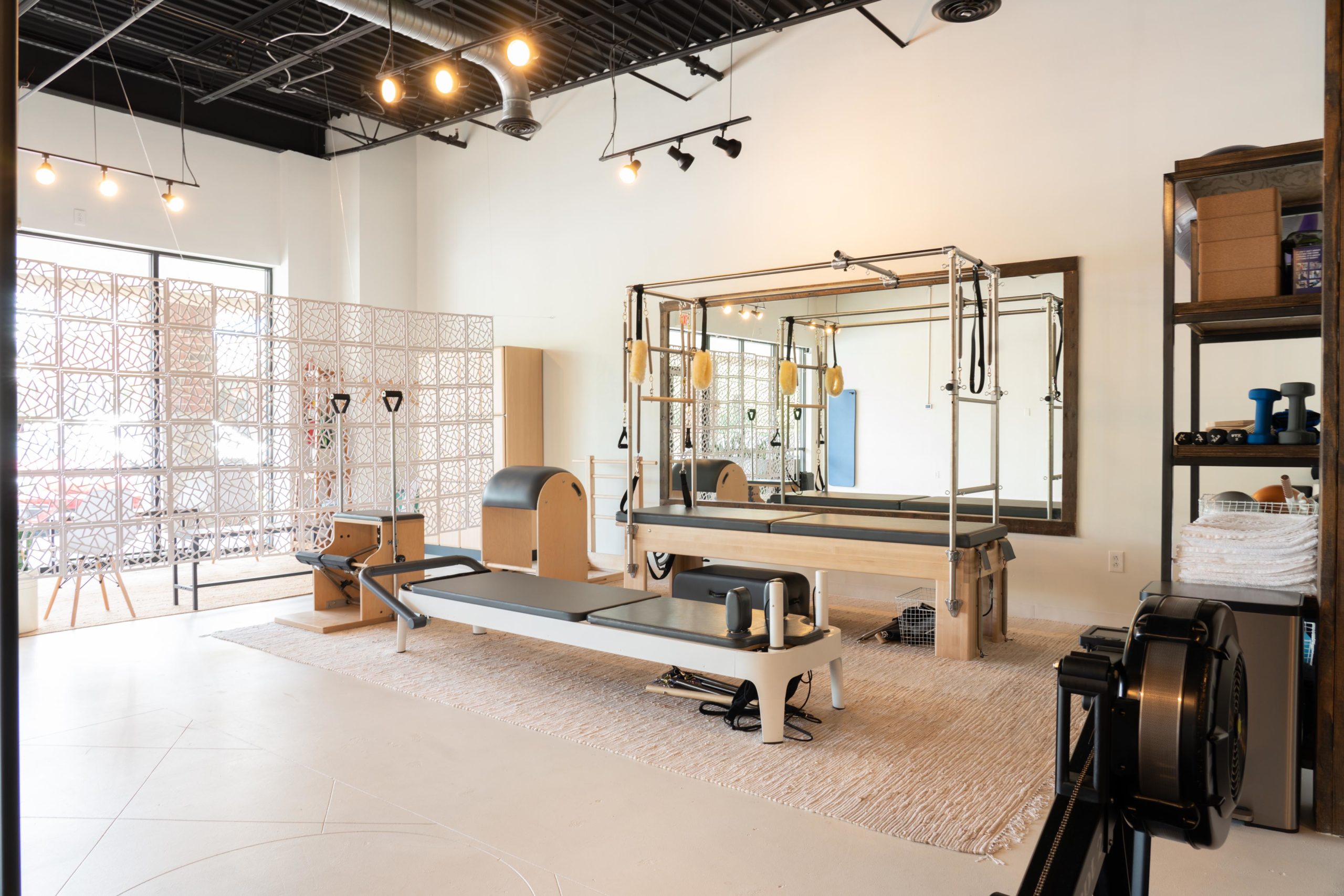First, What is Pilates?
Pilates is a system of physical fitness created by a man named Joseph Pilates in the early 20th century. Mr. Pilates’ experience aiding soldiers in rehabilitation during World War I helped him establish his method.

Classically, the same routine is practiced each session. Many exercises target strengthening abdominals, full body integration, and improving mind-body connection.
Unlike held yoga poses, Pilates exercises are performed in repetitions before moving to the next.
Exercises are done either on a mat or on specially designed apparatus, which include the reformer, cadillac, chair, and ladder barrel, to name a few.

Classic Vs. Contemporary Pilates
As the tree of Pilates’ disciples has grown, Pilates has evolved.
Pilates is now practiced by millions around the world.
There are many practitioners who prefer strictly adhering to the teachings of Joseph Pilates. Alternatively, there is a growing number of practitioners whose approach is referred to as Contemporary Pilates. This approach utilizes Pilates principles and Pilates apparatus in combination with the evolving science of kinesiology.
Here at Sense Movement & Exercise, we align ourselves with the Contemporary approach to Pilates. All of our Pilates sessions utilize the apparatus and all of our Classes are rooted in Pilates. Check out our Class options here.
Pilates at Sense Movement & Exercise integrates the classical principles of Pilates (concentration, centering, control, precision, breath, and flow) with a holistic understanding of anatomy, biomechanics, and neuromuscular rehabilitation.
7 Ways Pilates Can Benefit You
- Improved Posture
Posture is more than standing straight. Posture is dynamic. Think of the body in terms of muscles and bones. Bones create structure and muscles move that structure through space.
Good posture is a synergy between agonists (muscles responsible for moving bones in a particular direction) and antagonists (muscles that oppose the agonists’ actions, but need lengthen to allow bones to move in the agonists’ direction). It is the dance between agonist and antagonist muscles that establish posture.
If muscles lack strength or length, the resultant imbalance will create poor posture. Pilates classes and sessions are designed to improve musculoskeletal balance.
2. Increase Body Awareness
Body awareness is the felt sense of where we are in space and our different positions from moment to moment. Do you understand and know all parts of your body? Can you connect to how those parts of your body feel? Are you aware of how each of those parts move?
The education and attention to detail provided by Pilates increases awareness and strengthens the mind-body connection.
3. Enhance Diaphragmatic Breathing
The diaphragm is arguably the most important muscle in our body. Besides it’s function of helping us breathe, when it works properly it pressurizes and engages our abdominal wall. A pressurized abdominal wall supports and stabilizes our spines.
Every Pilates exercise is coordinated with a specific breath pattern to encourage proper diaphragmatic movement.
4. Reduce Back Pain
Back pain is one of the most common types of pain experienced by adults. A recent poll showed that over half of US adults experienced back pain for at least 5 years.
The reasons for back pain are widespread, but multiple studies have shown a reduction in chronic pain following an intervention of Pilates.
5. Safely Exercise while Pre or Post Natal
Choosing an exercise regimen while pregnant or post-labor can feel daunting. With an overload of information, you’re bound to find conflicting advice.
A woman’s body transforms immensely during pregnancy.
A well-trained Pilates instructor who has completed a Pre or Post Natal Certification will both prepare your body for labor and help you heal after you have your baby.
A Pilates routine throughout pregnancy can also alleviate commonly experienced back or hip pain.
6. Avoid Overstimulating Sympathetic Nervous System
Finding relaxation and rest in today’s world isn’t as easy. We live in an overly connected world where pings and rings reach us everywhere we go. Although FaceTiming with family is priceless, our bodies and nervous systems are overstimulated.
Our autonomic nervous system has two main modes: sympathetic and parasympathetic. The sympathetic system is active when we are in a state of fight or flight, while the parasympathetic system is active when we feel safe and relaxed.
If you are someone who struggles with chronic stress, doing an intense workout too often may have negative effects.
Exercise induces physical stress. If cortisol (the stress hormone) is out of balance, the physical stress from exercise will keep cortisol levels high. When cortisol remains high, we remain in a sympathetic state, unable to rest and relax.
PIlates is a good option for anyone experiencing chronic stress. It is low impact, it doesn’t stress the cardiovascular system, but it still delivers a full body workout to keep you in shape.
7. Improve Mobility
Mobility is defined as usable range of motion. Increased mobility is often associated with stretching, but stretching only tests the length of your tissue. Mobility measures one’s ability to access and control joint range of motion. Pilates works to both lengthen tissue and teach you how to control movement.
Whatever your reason for trying Pilates, you are guaranteed to feel the benefit!
Your First Class is Free.
